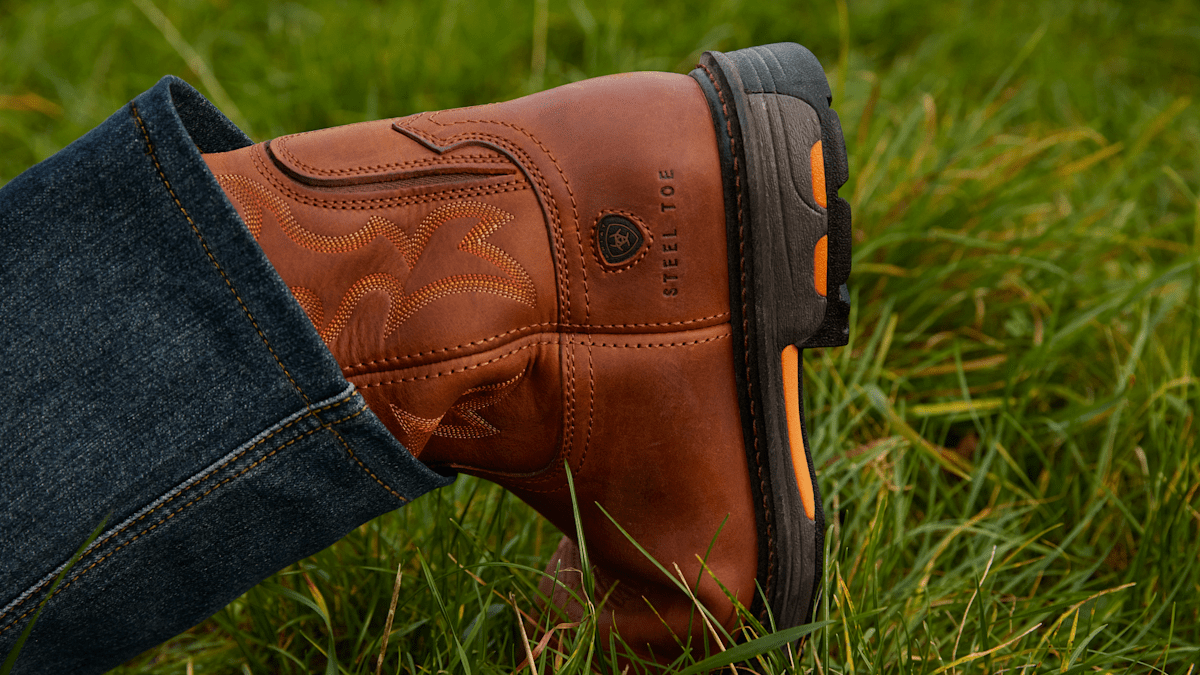
How to Care for Your Work Boots
Working hard all day can take a toll on your work boots, but not if you care for them properly. Learn how to care for work boots with Ariat UK.
When you’re hard at work, your boots take care of you. From steel-toe caps keeping your feet safe to weather-resistant features keeping you warm and dry as you work, work boots are part of your safety equipment. To ensure that they continue to keep you safe for a long time, you need to return the favour – take care of your work boots!
Depending on your work, and what damage your boots may face over time, there are different ways for you to look after your work boots. Join Ariat as we uncover the best ways of taking care of work boots.
What Causes Damage to Work Boots?
Of course, the first factor that can cause significant damage to your boots is simply age. The longer you’ve been wearing your boots, the more likely they are to be a little degraded. Though with proper care you can prevent having to replace your work boots early, you will eventually need to replace them in order to maintain your safety.
Another major culprit of damage to work boots is dirt and grime. Working outdoors, in the yard, on the ranch, or on a farm can come with lots of muck. Uncleaned leather and suede boots can dry out and lose their quality when left uncleaned for too long. So, although they will inevitably get dirty, the best thing is to clean them regularly to keep them in good working order.
When cleaning and drying your boots you should be careful, as direct heat can cause damage to your boots too.
Finally, mistreating your boots can damage them so be sure to unlace lace-up work boots before you take them off, as well as store them properly, and avoid moving things by kicking them with your boots.

How to Keep Your Work Boots in Good Condition
Let’s start at the beginning – you should break your new boots in correctly. When you first get your boots, don’t be tempted to oil them. Before you start to oil them, you want to allow your boots to mould to your feet properly. If you oil them too early, you run the risk of relaxing the leather and creating a loose fit.
After a few weeks of regular wear, you should begin regularly oiling your boots. Leather soaks up oil well, so start with an even coat and you may choose to use more next time. Where there are joins in the leather should be given a little extra attention, while you should avoid using too much oil around any metal hardware.
As you go forward, try to regularly and evenly oil your boots, but if you notice cracks in the leather in any places then you ought to oil these a little more than elsewhere. Get to know your boots well and you will notice any extra cracks or strains and tend to them well. Spotting signs of age is easier when your boots are clean, which is another reason to keep on top of work boot cleanliness.
Throughout your boots’ life, always make sure to unlace your boots fully before removing them and to store them upright in dry conditions. Wearing wet boots or drying them using heat can also cause damage.
How to Clean Your Work Boots
Cleaning your work boots is very important – if you haven’t already noticed, we’re pretty keen on it. However, it isn’t simply a case of taking a wet cloth to your boots and wiping away the dirt; you need to use the right products and make sure to dry your boots properly afterwards.
Leather work boot care guides will differ on exactly how regularly you should clean your leather work boots, but every couple of weeks is a good rule of thumb. Your cleaning routine will depend on how often you’re wearing your boots and how dirty they get when working, so use your discretion.
If your boots aren’t too dirty then you can clean them using just water, but if you’re getting rid of tough grime or dirt then we recommend using a water-based cleaner. You may also choose to use a saddle soap with a clean cloth – in this case, massage the cleaner into the leather and rinse with water.
Don’t forget to clean the insides of your boots too, though you may choose to do this a little less often. You can use shoe shampoo or shoe cleaner to do this – follow the product instructions to remove odours and dirt. Make sure the insides of your boots are fully dry before wearing them again.
When your boots are squeaky clean, use a dry cloth to soak up any excess moisture. It is very important that you do not use heat to dry your boots – excessive heat can cause your leather boots to dry out and crack, undoing all the good maintenance work you’ve done. Once your boots have air dried, you can use an oil to add extra protection to the leather.
When Is It Time to Replace Work Boots?
Deciding when it’s time to replace your work boots depends on a few factors – how often you wear one pair of boots, how long you’ve had them, how the leather looks, among other things. Once your boots have old leather or are fitting loosely, and cleaning is not bringing them back to life, then it is time to replace them. Ariat has an excellent range of work boots, designed to keep you safe and comfortable at work, all day long.




